

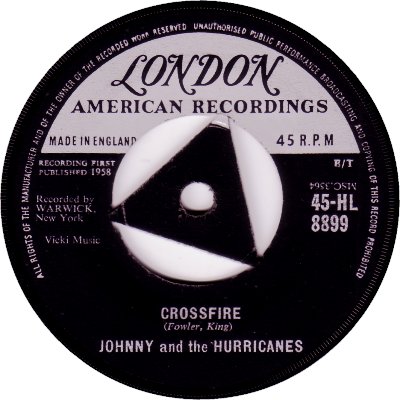
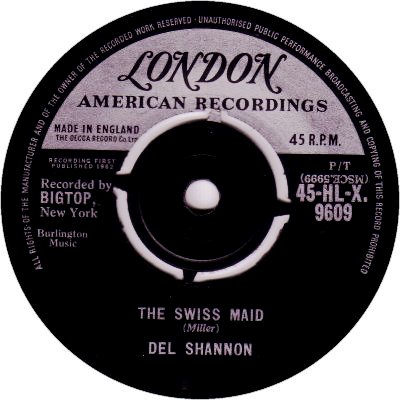

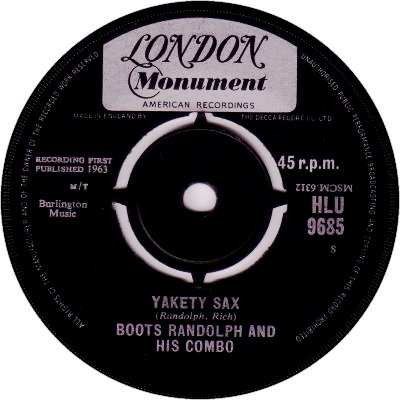
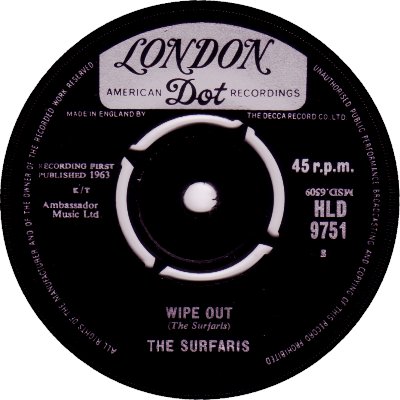
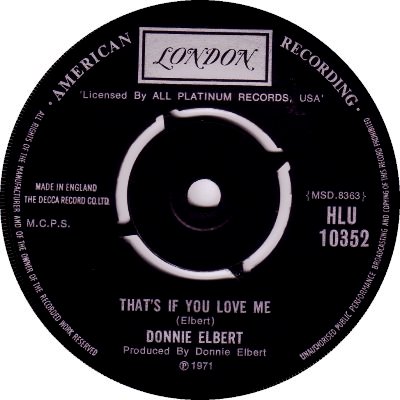
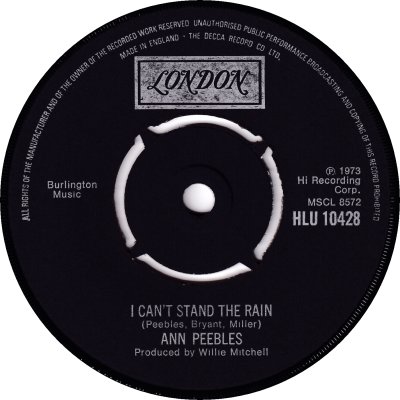
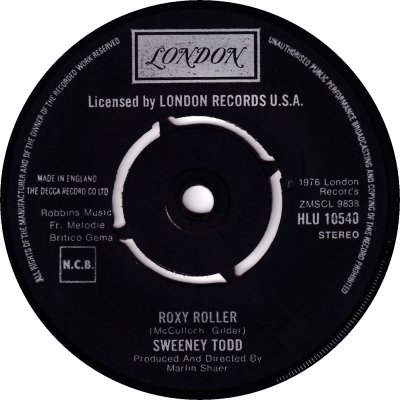

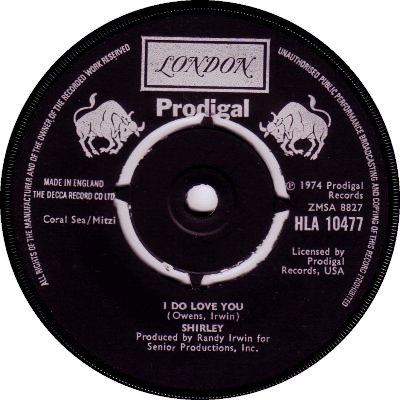
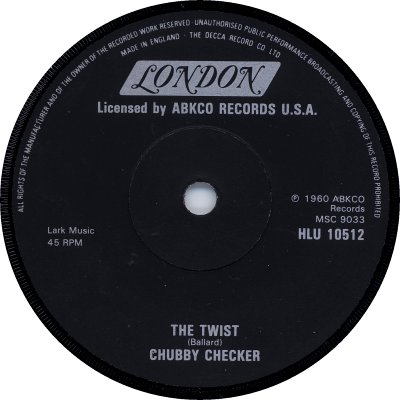
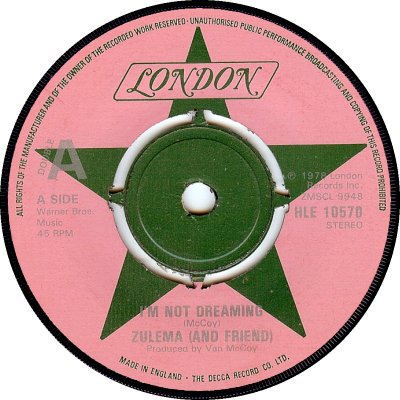
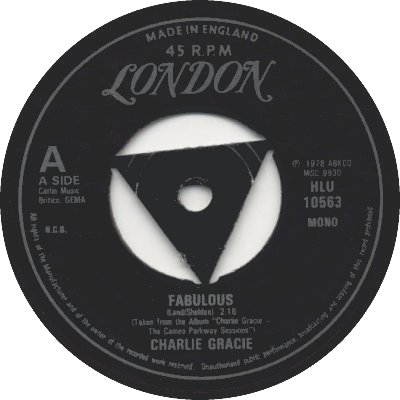
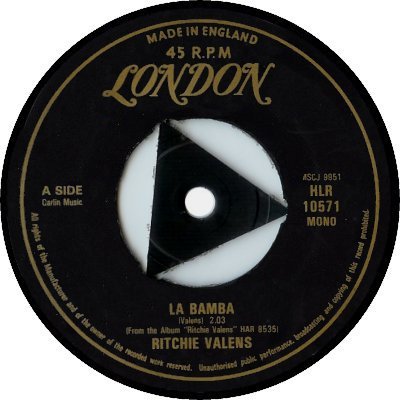
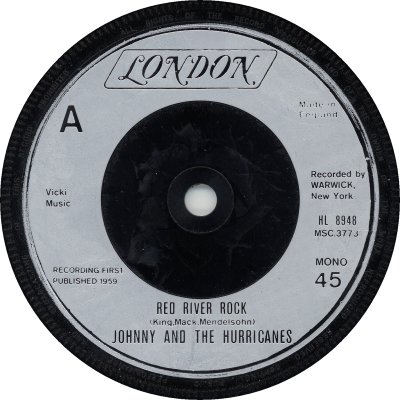
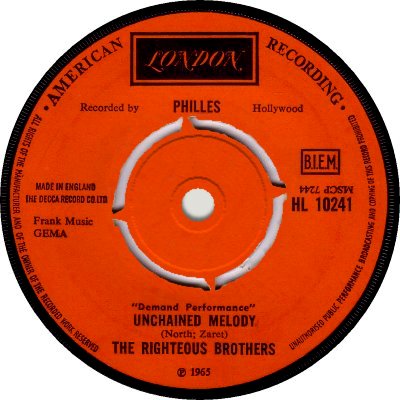
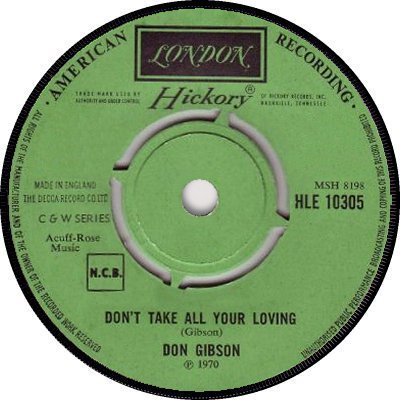

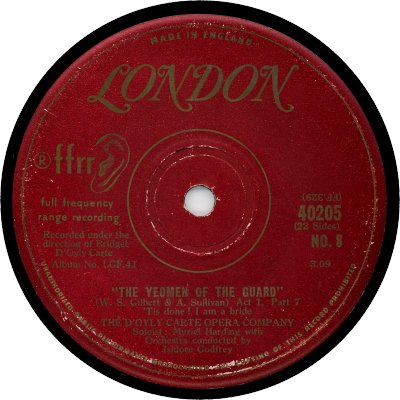
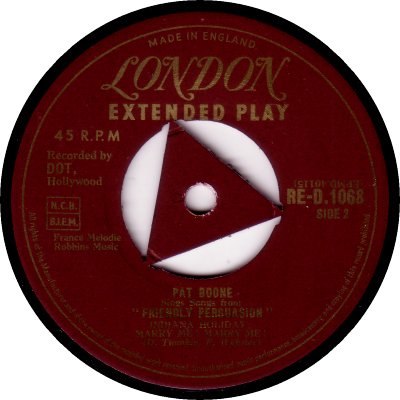
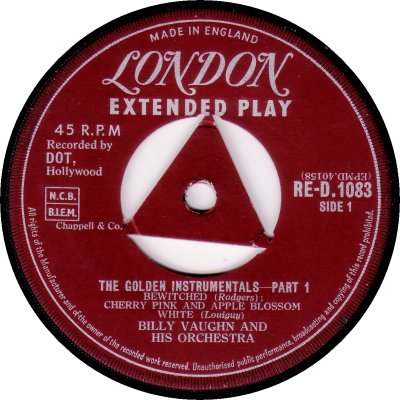
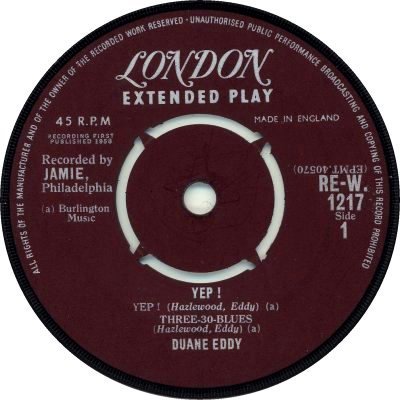
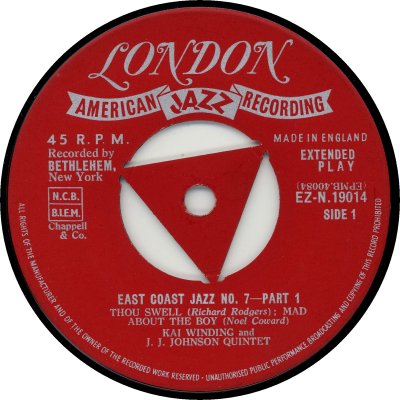
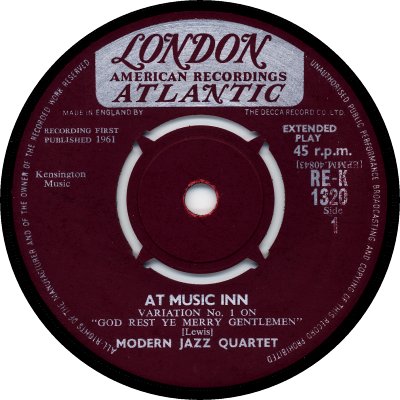
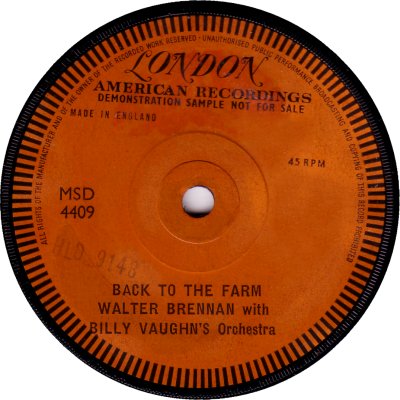
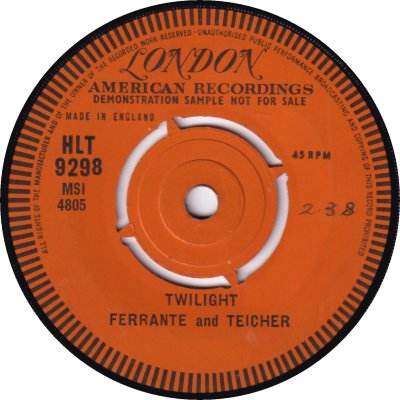
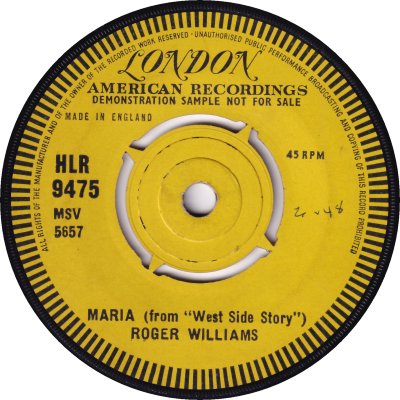
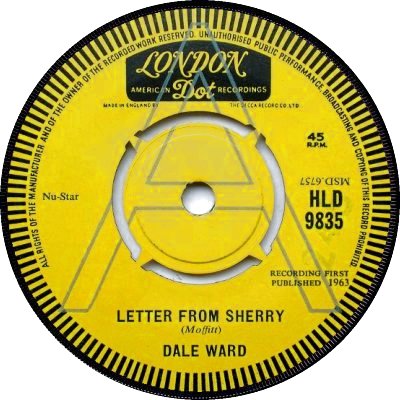

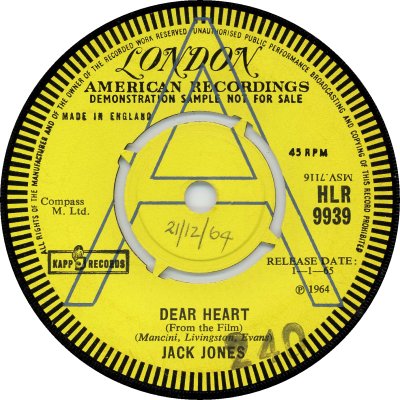
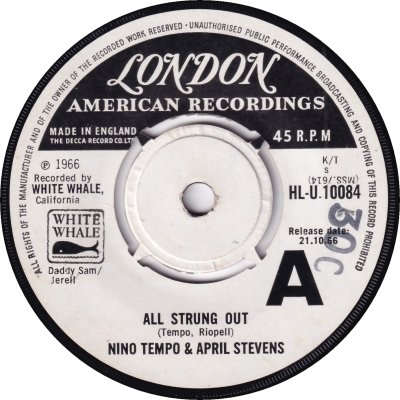
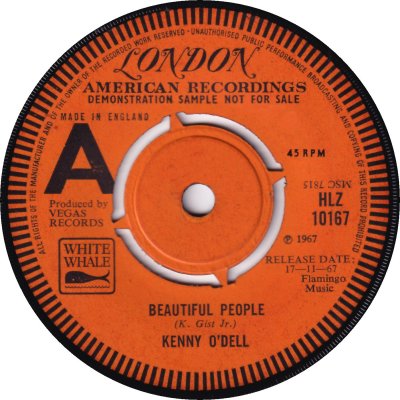
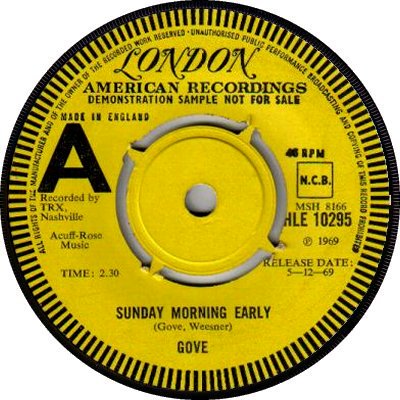

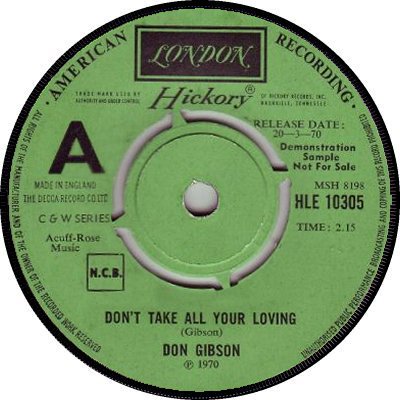

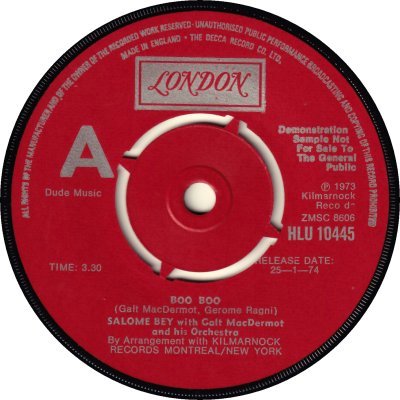
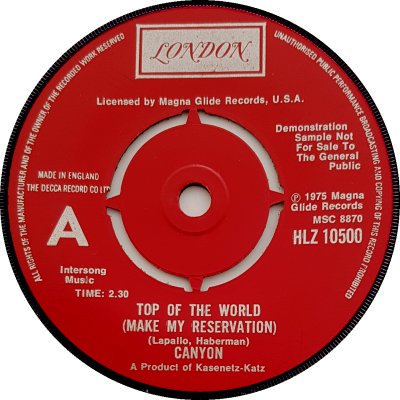

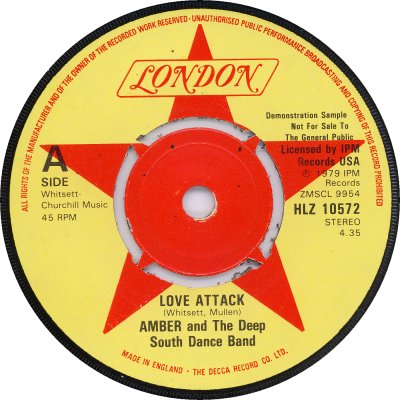
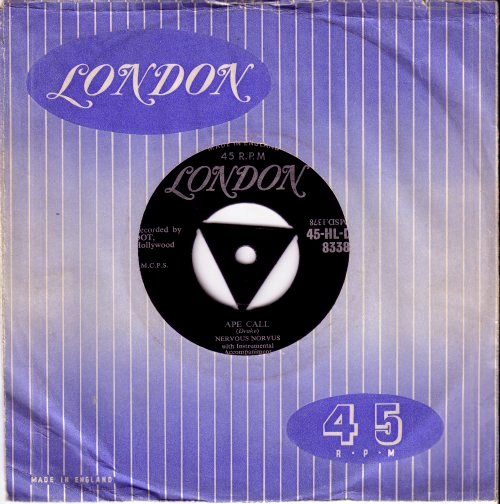
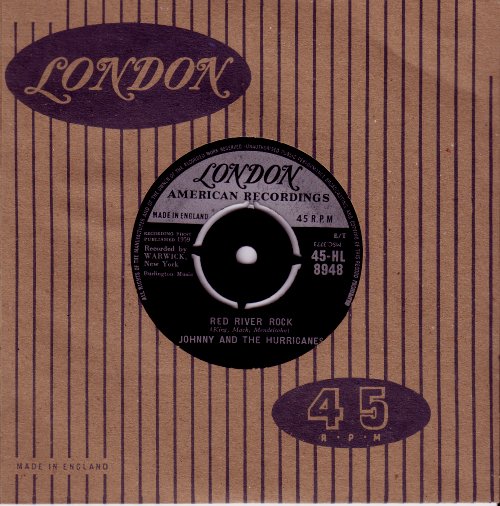
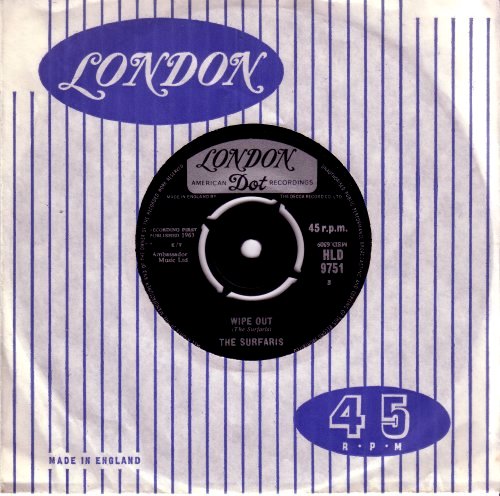
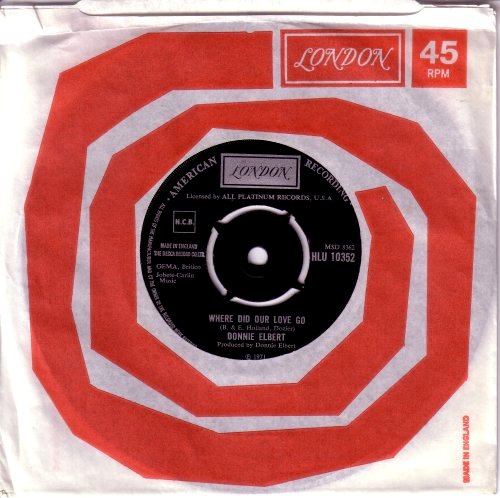

Part of the Decca group, London was used as an outlet for records that were licensed from American sources. The licensing companies were credited on the label; occasionally their logos were featured as well. London started life in 1949, in 78rpm format. Numbering appears to have begun in a HL-8000 series for singles, but often another letter was appended to the 'HL'; this third letter reportedly denoted restrictions regarding territories to which the record could be exported, though some of the longer lasting ones appear to have been connected with the company from which the record had been leased - see below for details. During the decades of the label's existence the numbers moved on into the 10000s. Pop EPs were numbered in the REx-1000s and Jazz ones in the EZx-19000s, with the 'x' again varying according to the company from which the material was sourced. London was basically a label for popular music, so its products tended to correspond with the current musical trends. As far as the 7" format is concerned its glory days were in the late '50s and early '60s, during which period it was the British outlet for such companies as Monument, Atlantic and Dot; when those labels set up their own British operations London's importance faded somewhat. It pressed on throughout the '70s, issuing a mixture of Soul, Rock and Pop, along with the occasional novelty item, but it rarely bothered the chart compilers. After Decca was bought by Polygram, at the very end of the decade, only a handful more singles in the HL series were issued, the last of them, HL-10582, in February 1982. However, with numbering in a new LON-100 series, London was reinvented as a contemporary Pop / Dance label, and it went on to enjoy considerable success.
Initially labels were tri-centred and had the name at the top in a rather curly script. Up to c.1956 the printing was in gold (1), from c.1956-c.58 it was in silver (2). The familiar silver-topped label (3, 4) was introduced in 1958 and lasted until June 1967, when, with the release of HLU-10135, it was supplanted by a silver-on-black 'boxed logo' label (8). The words 'American Recording' disappeared with the release of HLU-10415, in April 1973; the words 'Made in England. The Decca Record Co. Ltd' moved from nine o'clock to above the logo, and the licensing label credits, which had been under the box, shrank in size and migrated to half-past two (9). There was another change in January 1975, with HLU-10475: the perimeter text altered, and the manufacturing and licensing credits returned to their old positions - the words 'American Recording' were not reinstated, however (10). Finally a medium-sized 'A' was added, usually at 10 o'clock (11). Records in the 'Demand Performance' series of reissues, dating from 1969, had orange labels (18). Early 1970 saw a licensing agreement with Hickory; the first two singles released under the deal had green labels (19, 37) but subsequent issues were given the usual black ones. In the same year there was a short-lived Reggae series, with red printing on yellow labels (20); these records were licensed from Steady Records of New York.
The 'boxed logo' design was used until the label's twilight, in 1979, when it was supplanted by a rather more adventurous design featuring a slanted boxed logo and a star, which came either in green-on-pink (14), for product licensed from Lejoint, or red-on-yellow (42). 'Music Week' of the 14th of April 1979, commenting on the development, said that Decca were planning an update for Disco releases on London, with a new label based on the American design. During 1979 there was a series of singles licensed from Big Sound records and another of ones licensed from Bomp; the labels on these were distinctive enough for me to give them their own pages (q.v. both). A solitary single by Chubby Checker coupling 'Let's Twist Again' and 'The Twist' (HLU-10512) appeared on a black label with the slanted box (13); this was a 1979 reissue of a pairing that had first been released in 1975. I suspect that it was made for Lightning Records (q.v.), as rather than licence material for release on Lightning's 'Old Gold' label (q.v.) Decca did several other pressings for that firm using a special red Decca label - this may be the London counterpart, as my copy has a Lighting Records sticker on it. After Polygram bought Decca a few London singles from the back catalogue were pressed with injection moulded labels by its new owners, again using the slanted boxed logo (17); regardless of the date on them, these are from the 1980s. EPs had red (21, 22, 23) or, later, plum-coloured labels (24, 26). From 1955 to 1959 Jazz EPs were marked accordingly (25). The tri-centred labels made a brief comeback in 1978 on a couple of reissues: one was silver-on-black (15), the other gold-on-black (16).
Singles licensed from Atlantic had their own headstone-like design (5, 26) from 1960 until 1964, when Atlantic became a label in its own right. The 'headstone' was also used for singles from Monument (6) from 1962-c.64, and Dot (7, 30) from 1962-c.65.
Moving on to demonstration copies, London demos were initially single-sided, like those of the other members of the Decca family, and they had orange labels; each side of an issue had its own demo, which had the matrix number printed on the label - the catalogue number was usually hand-stamped on it (27). As was the case with the other Decca family demos, they came in plain brown sleeves (47). When double-sided demos were introduced, in November 1960, the orange design was retained but catalogue numbers replaced the matrix numbers (28). The labels turned yellow in March 1961 (29), and gained a black 'A' at four o'clock from July 1962. In September of that year the black 'A' was replaced by a large silver / grey hollow 'A'. This design remained in place until January 1965, though the colour changed from yellow to white (31) and back again (31) several times during that period. From January 1965 the large hollow 'A' was replaced by a small solid one at 10 o'clock for standard London singles, though 'headstone' singles persevered with the hollow 'A' until July 1966 (27) - thanks to John Timmis for that scan - and three of the singles licensed from White Whale Records in 1966-67 were given their own 'negative' design (33). With a change of colour to orange (34) from November 1967 to May 1968 and then back to yellow (35), this 'small solid A' design lasted until March 1970. At that point a change of policy led to demo labels being merely issue labels with the appropriate text, the release date, the playing time and a medium-sized 'A' added (36, 37). From June 1972 these demo labels were coloured red, in common with demos of several other Decca family labels (38, 39); the release date disappeared in January 1975 (40). Demos of the 'Star' labels of 1978-79 seem to have be the same as the issues but with the appropriate wording added (42), while the only 'Big Sound' one that I have seen was white with black printing, as were the 'retro' tri-centred ones from the same period (41). The discography below only covers the 1970s. The fourteenth scan appears by courtesy of Robert Bowes.
A fragmentary list of third prefix numbers (there may well be licensee companies which have been omitted):
A (early) = Cadence; A ('70s) = Prodigal; B ('50s) = Era, Bethlehem; ('60s) = Hollywood, Starday; C = Savoy; D = Dot; E = Atco, Atlantic; F = Bryan, Atlantic; G = Liberty; H = Challenge; I = Warwick; J (early) = Josie (J in the '70s was used for the Reggae series, from Steady); K = Atlantic, Atco; L (early) = Carlton, Guaranteed; L ('70s) = GNP Crescendo; M (early) = Chess, Argo; M ('70s) = Bang; N = Era, Dore; O (early) = Specialty, Dot; O ('70s) = Artists of America; P = Imperial; R = Kapp; S = Sun, Ace; T = United Artists; W = Jamie, Liberty; X = Big Top; Y = Specialty, Everest; Z (early) = RKO, Shout; Z (70s) = Bang, Magna Glide, Bomp (and others?). U covered a host of other labels which presumably either didn't merit their own letter or which shared the same export restrictions - Hi, Monogram, Carlton, etc. Records from some companies can be found with different third letters, which suggests that either the restrictions or the licensing agreement had changed; for example early and late Steady singles were HLUs, middle ones HLJs.
(Prefix information partly from Austin Powell, at http://www.spectropop.com/archive/digest/d957.htm)



Copyright 2008 Robert Lyons.

